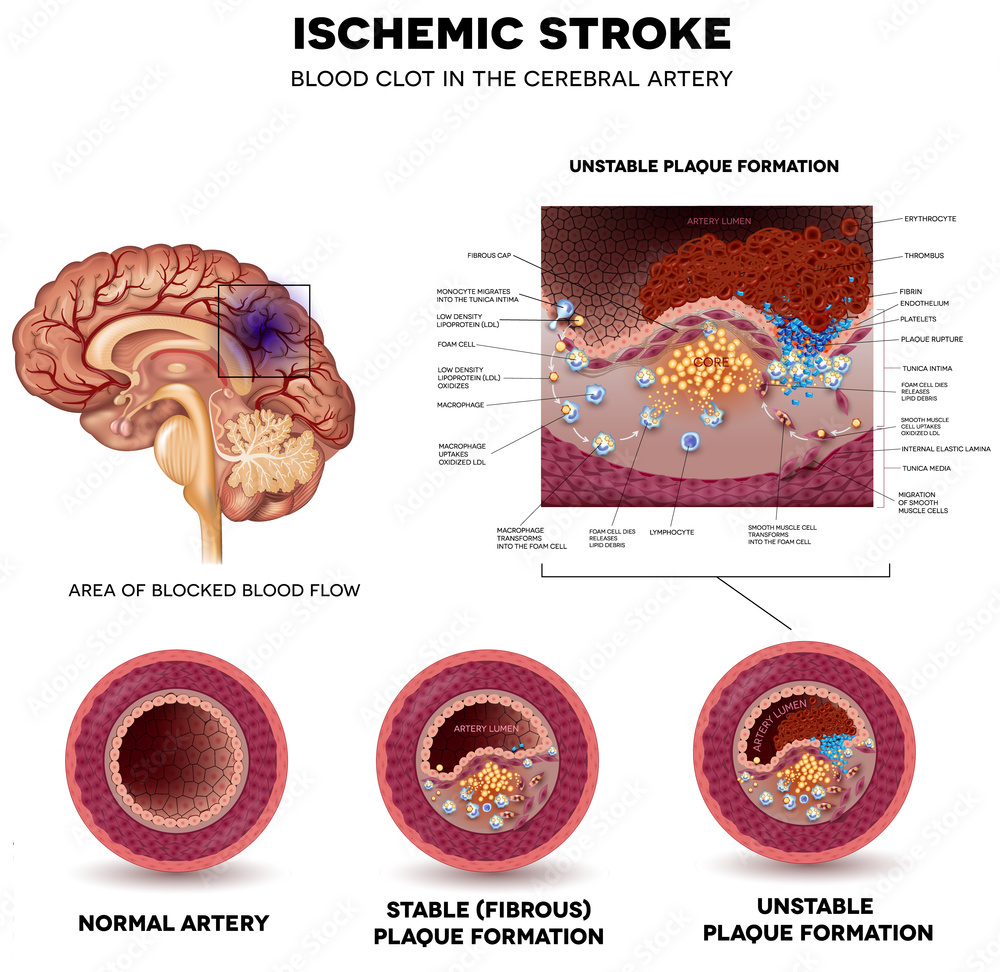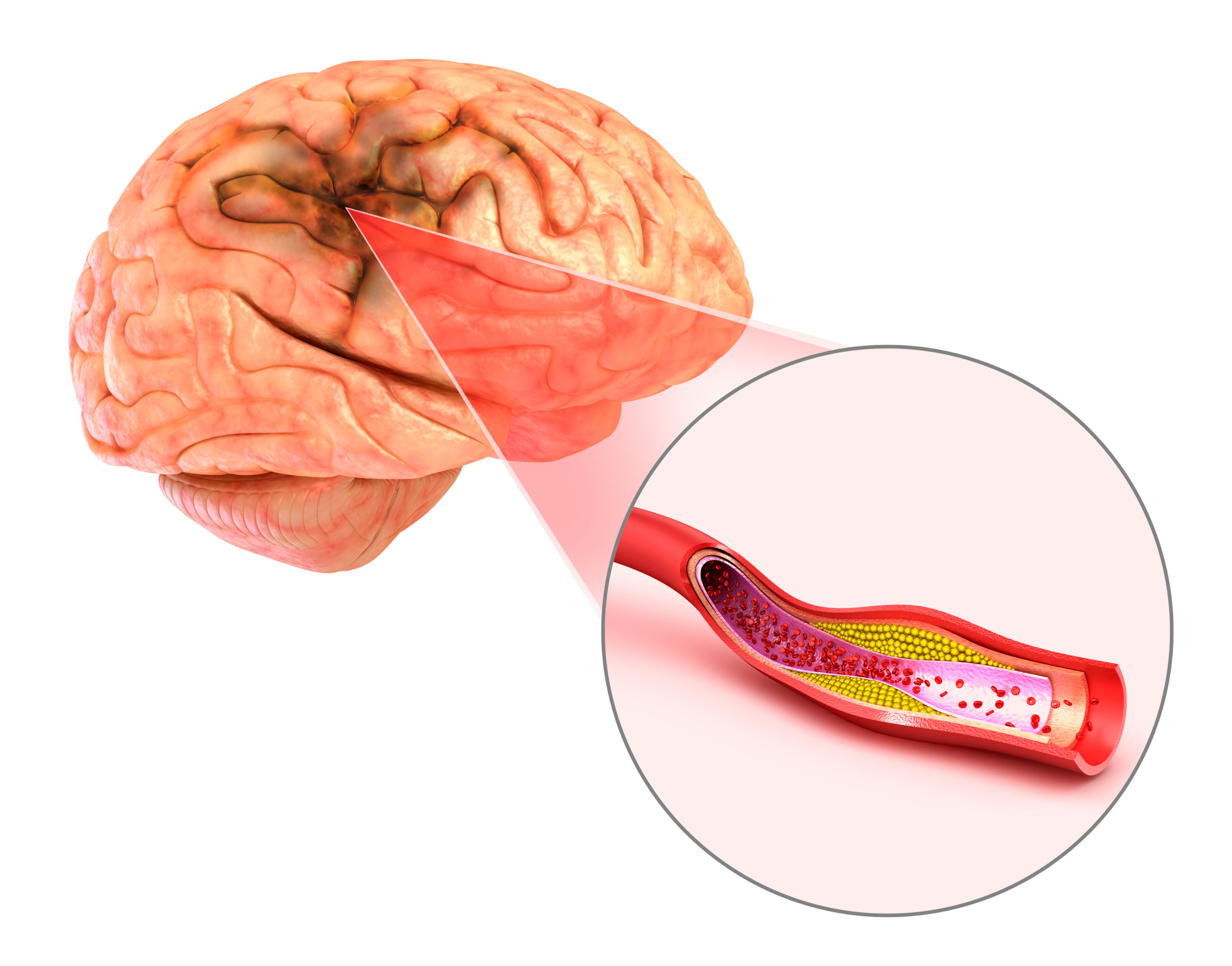If you’ve survived a stroke, you may be anxious about the possibility of having another. Rest assured there are people on your team of medical professionals who want to help and a lot of steps you can take to decrease your risk.
This article will get you started on preventative measures you can control now to decrease the chances of a second stroke. What you eat is obviously important, so I will also focus on the best diet patterns and foods to eat for stroke recovery.
The Importance of Blood Vessel Health
Understanding why you had a stroke is the first step in preventing a second. After an event occurs, your cardiologist may perform a variety of tests to determine the underlying cause of the stroke.1 This will help guide your treatment plan. A well-rounded plan should include visits to a registered dietitian who specializes in heart disease, who will ensure you are eating the foods that prevent stroke, and meet your nutritional needs for optimal blood vessel and heart health.
While strokes affect brain health, the problem is a cardiac issue that starts within your blood vessels. About 87% of strokes are called “ischemic” attacks, which means there is a lack of blood flow to the brain.2

An ischemic stroke generally has two underlying causes- atherosclerosis and high blood pressure.
Atherosclerosis is when fatty deposits, including cholesterol, block artery walls. If allowed to build up, these deposits can eventually block blood flow, or even burst and result in a blood clot. People with high LDL cholesterol are at increased risk of developing atherosclerosis over time.3
High blood pressure, or hypertension, can cause damage to arteries, by causing little tears and cracks along the interior artery surface. Because the walls of the blood vessels are no longer smooth, cholesterol can collect along the damaged areas, contributing to the development of atherosclerosis.4,5
Luckily, you can improve both atherosclerosis and high blood pressure with diet and lifestyle changes to lower your risk of stroke.
How to Reduce Risk of Stroke
The good news is that there are many factors that you can control to help avoid another episode, including:6
- Eating a truly heart healthy diet with the right foods that nourish your body and support blood vessel health.
- Aiming to get at least 30 minutes of exercise or more on most days.
- Quit smoking.
- Limit alcohol intake.
- Manage your stress by using relaxation methods daily.
- Work with a dietitian if you need help achieving a healthy body weight.
- Control your blood pressure with a combination of diet, lifestyle, and medications.
If you need support or want to learn more about these important lifestyle changes to prevent a second stroke, my 6 week heart optimization group program Heart Healthy Habits can help. In the course, I teach you how to take control of modifiable risk factors like those mentioned above, address the underlying root causes of heart disease, and add in beneficial foods to prevent stroke, and to greatly decrease your chances of having a second stroke.
Know Your Numbers: Blood Pressure and Cholesterol
Knowing what your blood pressure and cholesterol levels are and understanding what they mean is important for improving your health. If you haven’t been tested recently, ask your doctor to check your levels and give you a written report to share with the rest of your health care team.
Blood Pressure (BP): Ideal blood pressure numbers are less than 120 for systolic (the upper number) and less than 80 for diastolic (the bottom number). Numbers chronically above these put you at risk for damage to your blood vessels. The higher the numbers are, the higher your risk.
Controlling Cholesterol: Cholesterol is a waxy substance used to make cell walls, hormones, and other important things like vitamin D. Humans can make cholesterol in the liver from the foods we eat.
Our bodies transport cholesterol in our blood by using protein transporters called lipoproteins. When our bodies have too much of a certain kind of lipoprotein called low-density lipoprotein (LDL) it will deposit excess cholesterol in less than ideal places, like along our cell walls. In contrast, high-density lipoproteins (HDL), sometimes called “healthy cholesterol” transports cholesterol to the liver where it can be broken down.
Ideally, you want your LDL to be low and your HDL to be high. Optimal cholesterol should be maintained within these parameters:7
- Total cholesterol below 200 mg/dL
- LDL below 100 mg/dL
- HDL greater than 40 mg/dL
- Triglycerides (a fat we use for energy) less than 150 mg/dL
If your numbers are not within those ranges, speak to your doctor and dietitian for a plan to improve your cholesterol. For more of an advanced look at your LDL cholesterol, read my other blog post, “What a High LDL Particle Number Means for Developing Atherosclerosis: What a Top Cardiac Dietitian Wants You to” here.
The Optimal Diet for Stroke Patients: DASH and Mediterranean plus personalization
Dietary changes can go a long way in helping prevent stroke. There are two diet patterns that can help- the DASH and Mediterranean. These are somewhat similar ways of eating, as both focus on eating fewer processed foods and more plant-based foods.
If your blood pressure is high, changing your diet is a great way to start improving those numbers. The Dietary Approaches to Stop Hypertension (DASH) has been shown to effectively reduce blood pressure without medication, reducing the strain on your blood vessels, and helping lower the risk of further damage.8
The main elements of DASH include:
- An emphasis on eating foods high in potassium, magnesium, and calcium. This can be achieved by focusing on specific fruits and vegetables, whole grains, and low-fat dairy products.
- Keeping sodium within your cardiologist’s or dietitian’s recommendations. While the recommended amount for general health is 2300mg per day, you may need less, closer to 1500 mg, depending on your risk factors.
- Keeping saturated fats to a minimum and avoiding trans fats altogether. Making a habit of reading food labels before you buy can help you avoid these.
You may have heard the buzz about the Mediterranean eating plan. It’s adored by many health care professionals because just like DASH, it’s been shown to improve heart and blood vessel health.9 The Mediterranean plan puts emphasis on:
- Plant foods:
Eating a variety of fruits, vegetables, legumes, and whole grains will provide you with a plethora of antioxidants, fiber, vitamins, and minerals that your body can use to fight heart disease.
- Legumes and whole grains:
Increasing soluble fiber helps reduce cholesterol by blocking it from absorbing into the bloodstream.
- Healthy Oils:
Extra virgin olive oil is emphasized in this plan. Using olive oil or other healthy options like walnut, canola, and avocado oils may help improve cholesterol numbers.
- Seafood:
Fish high in omega-3 fatty acids like salmon and sardines can help reduce triglycerides, another factor that can affect heart health.
- Exercise:
Regular daily exercise of at least 30 minutes daily is recommended on the plan.
Combining the components of the DASH and Mediterranean diets while personalizing to your specific needs can help improve heart and blood vessel health. These eating styles shouldn’t be thought of as diets, but instead as guidelines for including foods that can improve your chances of avoiding a second stroke.
Getting Help for Stroke Prevention
As a registered dietitian who specializes in cardiac care, I’ve helped thousands of patients reach their heart-healthy goals. I want to help you too!
If you would like to learn more about how to improve your blood vessel health with science-based lifestyle changes, I invite you to join my next 6-week heart optimization group program. In the program, we’ll discuss what a science based heart healthy diet entails and focus on adding delicious, specific, nutrient-packed foods that you may be missing from your menu, so you can feel confident about the health of your heart.
References:
- CDC. (2022, April 5). Treat and Recover from Stroke. Centers for Disease Control and Prevention. https://www.cdc.gov/stroke/treatments.htm
- “Atherosclerosis – What Is Atherosclerosis?” n.d. Accessed April 28, 2022. https://www.nhlbi.nih.gov/health/atherosclerosis.
- Ischemic Strokes (Clots). (n.d.). Www.stroke.org. Retrieved April 29, 2022, from https://www.stroke.org/en/about-stroke/types-of-stroke/ischemic-stroke-clots
- Sy Go, Michelle. 2021. “Hypertension (High Blood Pressure).” In All about Your Eyes, Second Edition, Revised and Updated, 178–79. Duke University Press.
- “Why High Blood Pressure Is a ‘Silent Killer.’” n.d. Www.heart.org. Accessed April 28, 2022. https://www.heart.org/en/health-topics/high-blood-pressure/why-high-blood-pressure-is-a-silent-killer
- “Stroke – Causes and Risk Factors.” n.d. Accessed April 28, 2022. https://www.nhlbi.nih.gov/health/stroke/causes
- Cholesterol Levels: What You Need to Know. (2017). Blood, Heart and Circulation. https://medlineplus.gov/cholesterollevelswhatyouneedtoknow.html
- DASH Eating Plan. (n.d.). Retrieved April 29, 2022, from https://www.nhlbi.nih.gov/education/dash-eating-plan
- Hernáez, Álvaro, Olga Castañer, Alberto Goday, Emilio Ros, Xavier Pintó, Ramón Estruch, Jordi Salas-Salvadó, et al. 2017. “The Mediterranean Diet Decreases LDL Atherogenicity in High Cardiovascular Risk Individuals: A Randomized Controlled Trial.” Molecular Nutrition & Food Research 61 (9). https://doi.org/10.1002/mnfr.201601015.
